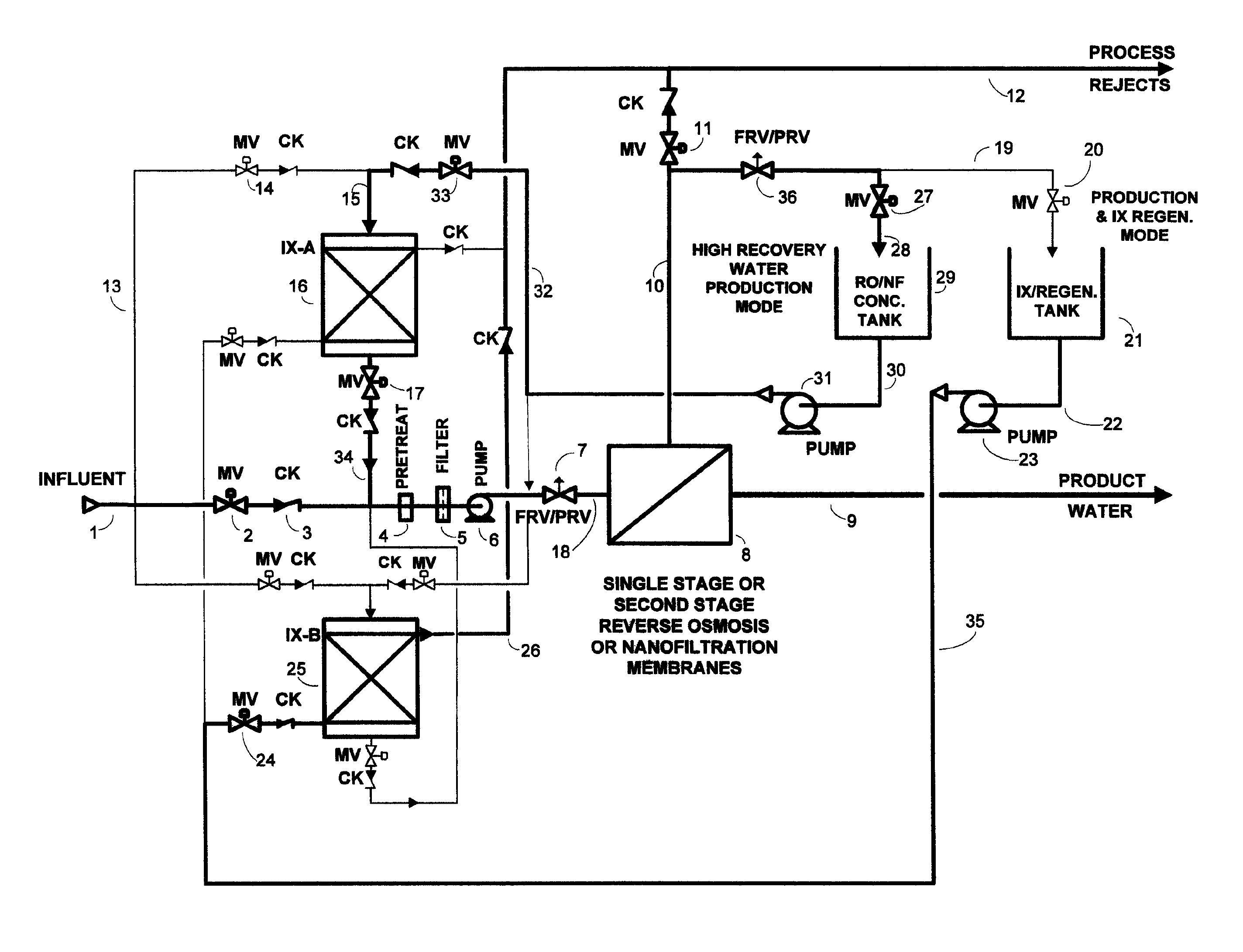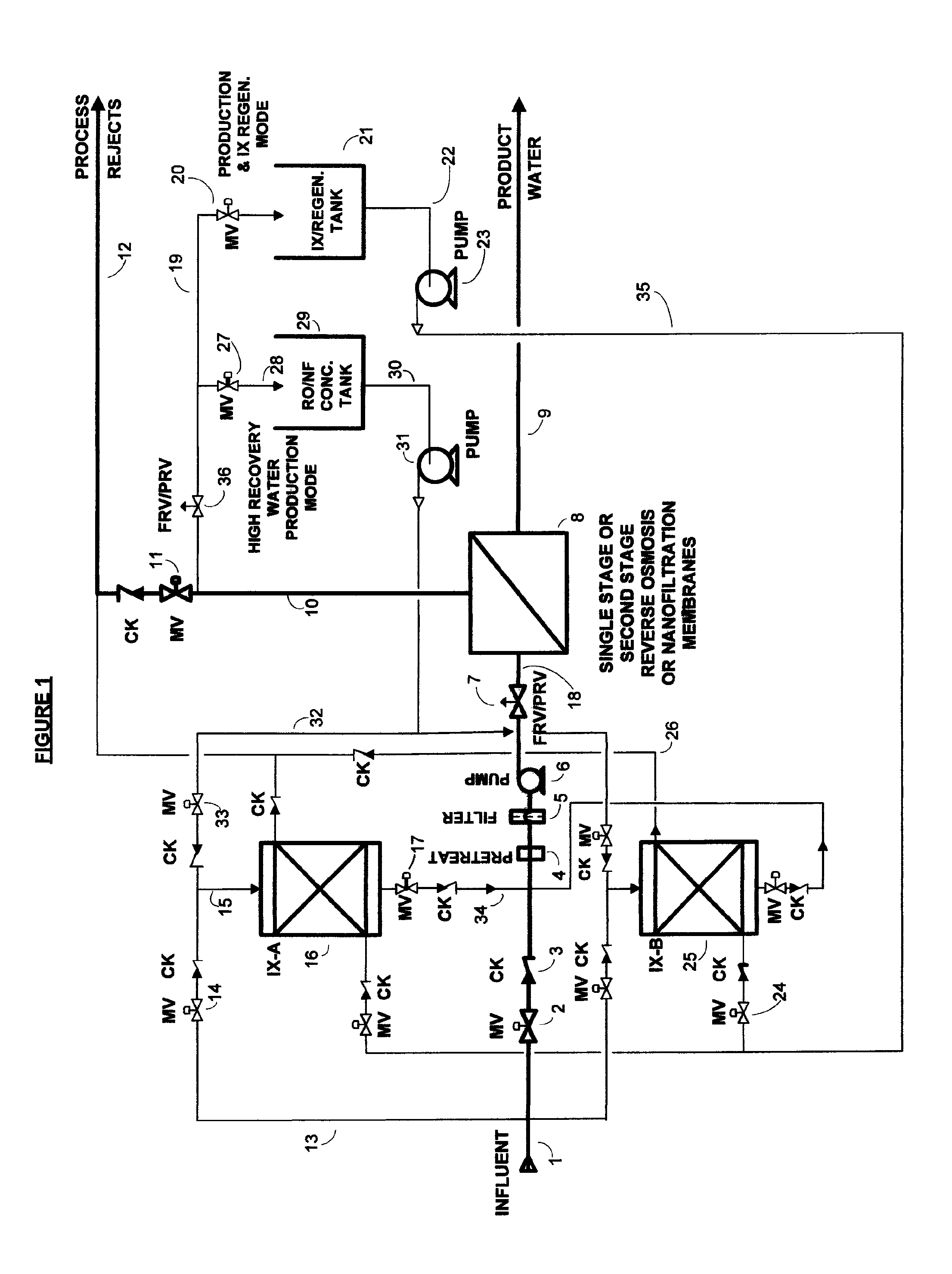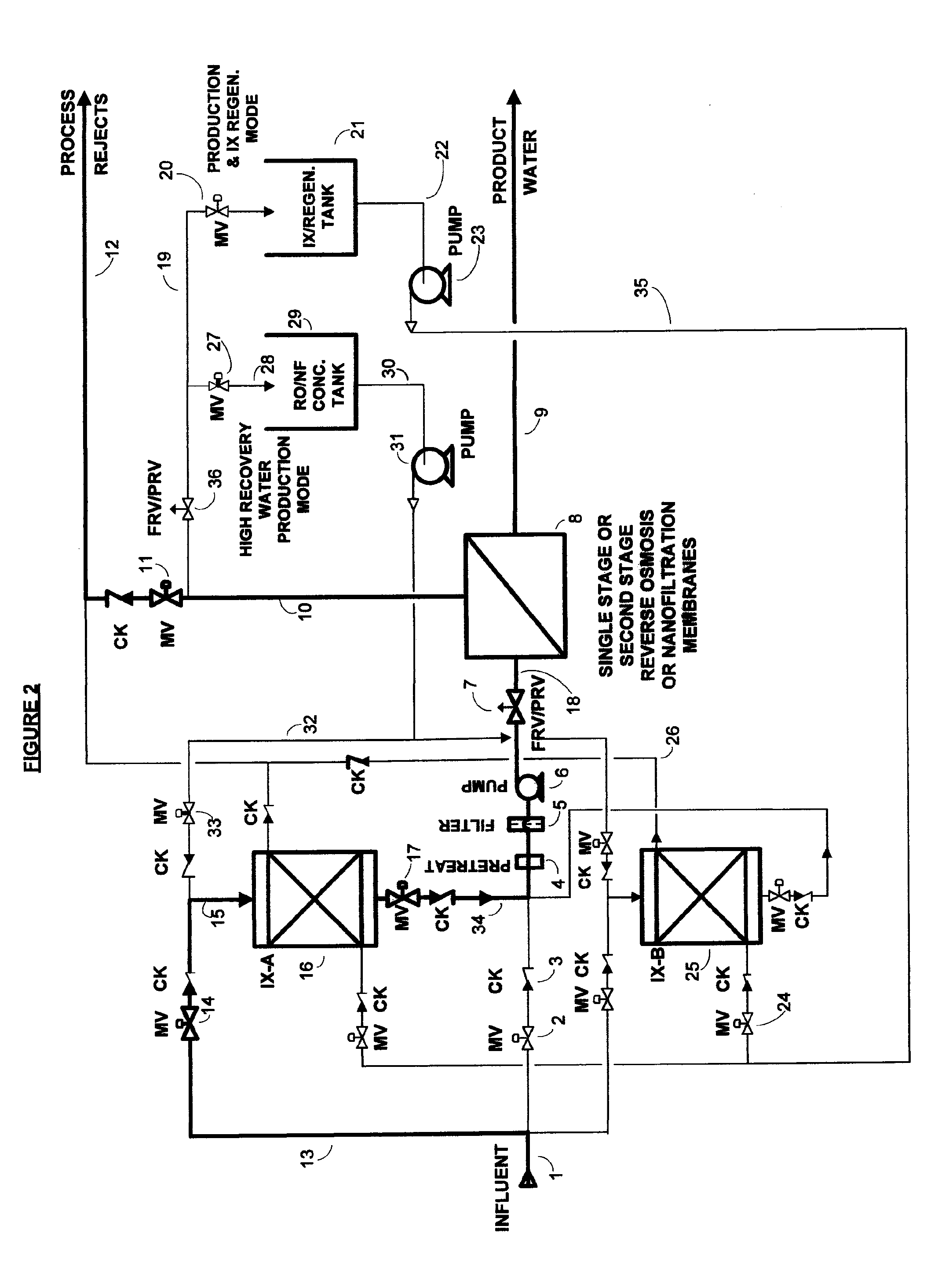Multi-use high water recovery process
a water recovery process and multi-use technology, applied in water/sludge/sewage treatment, reverse osmosis, cation exchangers, etc., can solve the problem of patenting process flexibility to simplify operation, reducing process reject volume, and reusing ro membrane concentrate to regenerate ix resin. the effect of membrane permeation recovery
- Summary
- Abstract
- Description
- Claims
- Application Information
AI Technical Summary
Benefits of technology
Problems solved by technology
Method used
Image
Examples
Embodiment Construction
[0056]This invention addresses the limitations associated with prior art ion exchange water softening methods and high recovery membrane-based water purification methods. The invention relates to the economical purification of water containing soluble and sparingly or partially soluble inorganic compounds using single-stage or 2-stage membrane processes that integrate efficient membrane water purification with ion exchange (IX) softening for continuous removal of hardness.
[0057]The present invention teaches a versatile process that aims at mitigating scale formation and maximizing the membrane permeate recovery while simultaneously eliminating the use of fresh water and commercial salt for ion exchange resin regeneration by using the membrane concentrate to regenerate the water softening IX resin. This multi-use membrane-based system and process can be used to achieve different process configurations that address several water purification scenarios that depend on the Influent Water...
PUM
| Property | Measurement | Unit |
|---|---|---|
| total dissolved solids concentration | aaaaa | aaaaa |
| concentration | aaaaa | aaaaa |
| concentration | aaaaa | aaaaa |
Abstract
Description
Claims
Application Information
 Login to View More
Login to View More - R&D
- Intellectual Property
- Life Sciences
- Materials
- Tech Scout
- Unparalleled Data Quality
- Higher Quality Content
- 60% Fewer Hallucinations
Browse by: Latest US Patents, China's latest patents, Technical Efficacy Thesaurus, Application Domain, Technology Topic, Popular Technical Reports.
© 2025 PatSnap. All rights reserved.Legal|Privacy policy|Modern Slavery Act Transparency Statement|Sitemap|About US| Contact US: help@patsnap.com



